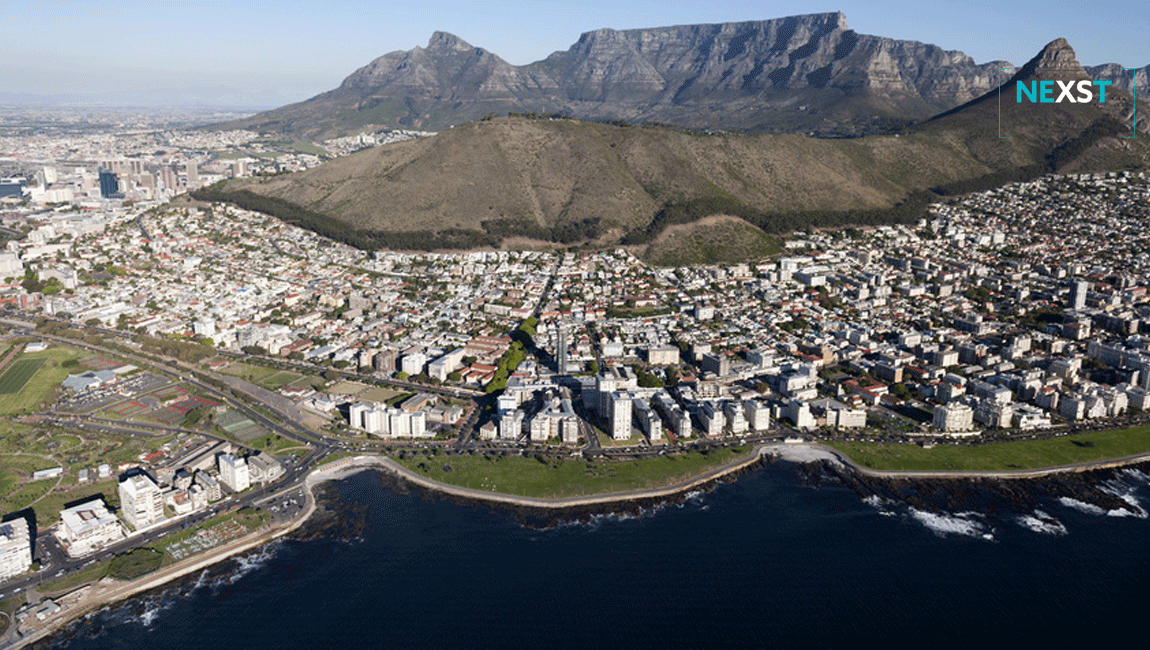Bridging South Africa’s Digital Divide: the challenges

Over the last decade, there have been significant advances in fibre networks across South Africa. In recent years, bandwidth pricing between major centres has dropped significantly. There has been significant growth in urban In-metro fibre deployments, supporting FTTH and FTTB. Now, the focus needs to be on bridging the last mile, bringing fibre to rural regions. In part two of this article, to appear in the next edition, we’ll take a closer look at technological solutions.
If you look at Africa as a whole South Africa has the highest number of FTTH connection (640k) as at Jun 2019. Mauritius is second with 303k and then Kenya at 213k. The rest all have fewer than 100k connections. While South Africa has the largest number of active connections, less than 3% of all households have FTTH connections. Mauritius on the other hand has a household penetration rate of more than 65%*.
Just 10% of South African households have home Internet access – significantly lower than the 50% average across developing countries. The cost of equipment is a significant barrier, the cost of a subscription is less of an issue. There are significant regional disparities - 26% of households in the Western Cape have home access, whereas this is just 2% in the northernmost province of Limpopo.
“Having fibre in rural areas not only enables the local community to communicate with friends and family all over the country or even the world, but it also acts as catalyst for business growth,” explains says Johan Kleynhans, Managing Director, VH Fibre Optics (Pty) Ltd. “Local entrepreneurs will have the means to enable their businesses to grow beyond their local areas and expand rapidly to surrounding areas and even the rest of the country. With good broadband fibre services, proper education can be brought right to the doorstep. Remote learning and content can be distributed from main centres. This will give local rural students and scholars access to the same quality of education as anyone else in the country.”
South Africa’s government and several private companies are aiming to introduce better, cheaper internet access. But in spite of programs to roll out rural broadband not much is changing for rural communities. Yet, according to Minister of Communications and Digital Technologies, Stella Ndabeni-Abrahams, fibre may be the most critical component of all telecommunications infrastructure in South Africa, and critical for 5G. In spite of significant investments, six to eight times as much fibre should be deployed to realize the government’s vision for 5G. The government also aspires to boost average broadband speed from 10mbps to 100mbps. With this in mind, Ndabeni-Abrahams and several CEOs have signed a pact to roll out fibre in rural communities.
“There’s not much incentive for privately owned companies, who are trying to monetize investments already done in the urban areas,” adds Lucas Cruces, Connectivity & Fibre Solutions Manager at Prysmian Group. “The process is slow and costly, compared with urban areas, because customers are spread over a sparsely populated area and payback is very difficult to realise."
“Large national private sector operators are not keen to invest in rural areas – they look at the return-on-investment, and it does not add up,’ Johan continues. “Large mobile operators will only do a major build in rural areas is if there is a strong Universal Service Obligation, with effective enforcement. There is simply no business case that can get the nod. The solution to rural connectivity is to change the economics of creating a commercially viable telecoms infrastructure. We have to look at technologies and business models that allow radically lower build cost, and radically lower operating cost. As mentioned most rural areas are large distances away from the metro areas. This makes backhaul fibre very expensive and not economically feasible. Due to low income in rural areas the fibre models are different and very low cost material and deployment techniques have to be used to make the business model viable for these areas.
“Since 2010, the number of rural South Africans living within 50 km of a fibre node has gone from less than half of the population to over 65% in 2015 (and steadily climbing, no doubt). That’s half a billion people. 50 km is a long way in telecommunications terms. The magic distance in networking is 10 km or less, which is an easy wireless hop. What is important is that more than 22% of our continent’s population are 10 km from a node. In urban areas, backhaul links are shorter and more viable, but the metros or urban areas have other challenges, such the availability of way leaves as well as community forums demanding certain portions of the work at huge compensation. Government could assist by providing proper funding as well as relaxing certain criteria for deployment in these areas. It is crucial for government to work together with the private sector to bridge this gap and live up to the national fibre targets. Meaningful contribution to broadband across SA, in particular rural SA, relies largely on input from government, political will and investment.”
In part two of this article, we’ll be taking a closer look at the role of government and business, and technical solutions.
*Info courtesy of Africa Analysis.
The FTTx Council Africa commissioned Africa Analysis to carry out a Market Development Update for Sub-Saharan Africa. This report was released in October 2019. If we look at the FTTH connections as at December each year we can see a big decline in the connection rate each year.
| 2016 | 101 000 | |
| 2017 | 272 000 | 169% |
| 2018 | 499 000 | 83% |
| 2019 | 639 000 | 28% |
If we look at the FTTH Units passed rate the decline is even worse, as shown in the table below.
| 2016 | 430 000 | |
| 2017 | 906 000 | 111% |
| 2018 | 1 472 000 | 63% |
| 2019 | 1 719 000 | 17% |
The current market characteristics show the following:
- Much of the metropolitan areas have already been covered with fibre infrastructure. FNO’s have now begun to address smaller cities and towns. Focus has been more on the affluent areas and higher density environments.
- FNO’s are slowing down the build of new infrastructure. They are sweating their assets and are back-selling more on the existing networks.
- Most of the access fibre networks are open access. The larger networks have multiple ISP’s offering retail services on them.
- The market is very fragmented with almost 50 FNO’s of various sizes deploying active Ethernet and GPON networks.
- Consolidation has begun to take place with M&A activity and this is expected to continue.
The key wholesale FNO’s include companies like Dark Fibre Africa (DFA) incl. SADV, Frogfoot (part of the Vox group) Link Africa, Liquid Telecom (ex Neotel), Metrofibre Networx (MFN), MTN incl. Supersoninc, Octotel, Openserve, Vodacom and Vumatel incl. fibrehoods.
In the retail ISP space companies included are Afrihost, Cell C, Cool Ideas, Internet Solutions, Liquid Telecom (ex Neotel), MTN incl. Supersonic, Octotel incl. RSAWeb, Telkom, Vodacom and Vox
Source: Africa Analysis.








